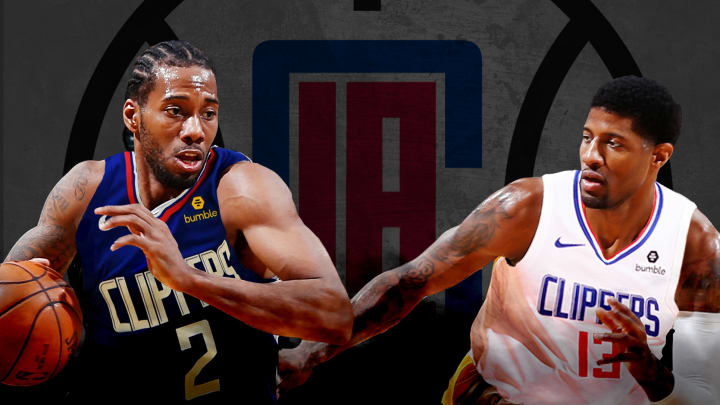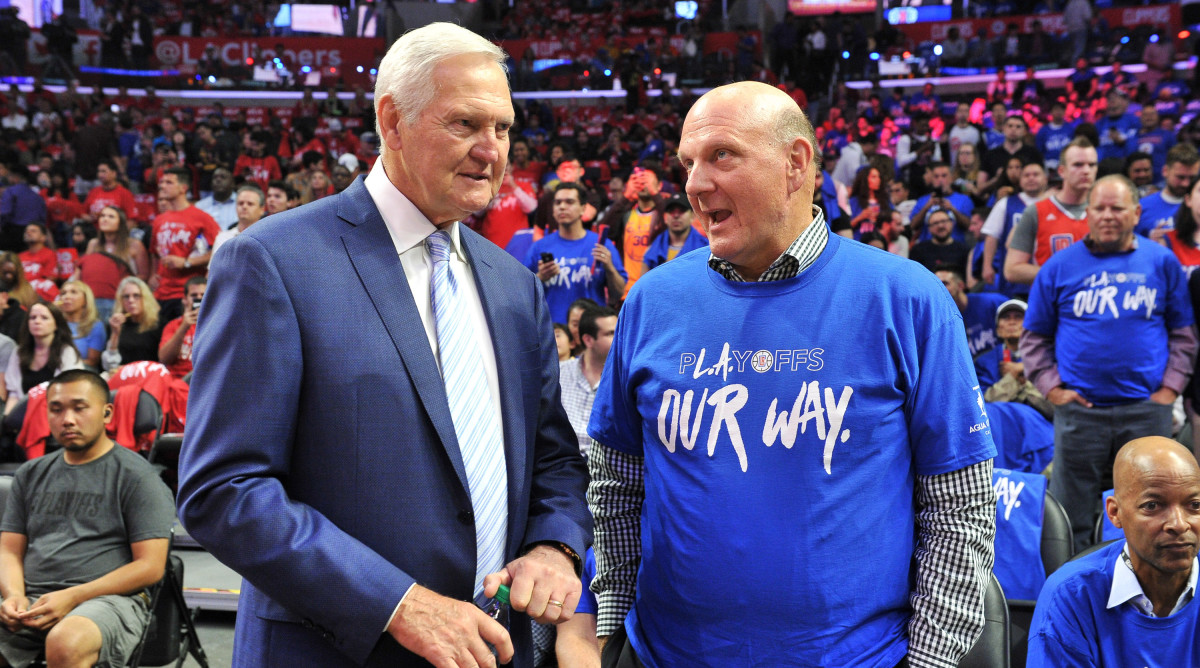A Clippers Summer: How L.A.’s ‘Other’ Team Stole the NBA Offseason

With an average of 31 wins and two playoff appearances over the last eight seasons, the Los Angeles Lakers have transmogrified into some version of, well, the old Los Angeles Clippers. Meanwhile, the Clips, with an average of 50 wins and seven playoff appearances over the same period, have become—if not exactly the Baylor-West Lakers or the Showtime Lakers or the Shaq-and-Kobe Lakers—at least the best version of themselves, a former punch line that has moved past a star-crossed history defined by devastating injuries, front-office mismanagement and plain bad luck.
For all that, though, on July 1, as the NBA moved its now-year-round operation to the Las Vegas Summer League, a backdrop against which championship teams are sometimes formed and others disassembled—plenty of Maple Leafs tickets available, Toronto fans—the Lakers’ Q-rating was back on the high side, certainly higher than the Clippers’. LeBron James seemed refreshed and happy as a Vegas spectator after missing the final two weeks of last season with a strained left groin; a managerial mess was cleared up with the departure of Magic Johnson (just kidding—it’s still a mess); and, best of all, Anthony Davis had chosen LeBron as a sign-and-trade partner, making the Purple-and-Gold a surefire championship contender.
To maintain pace, the Clippers clearly needed, in L.A. parlance, to take a meeting or two.
Well, those meetings are over now, and the Clips, with major additions Kawhi Leonard (free agent) and Paul George (trade) in place, are the Lords of L.A. “If you want to break it down as LeBron–Anthony Davis versus Kawhi-George, I still think the Clips come out on top,” says one NBA coach, desiring anonymity. “But you throw in Patrick Beverley and what he does, and it’s not even close. Advantage, Clippers.” The coach was referring to defense, where the Clippers now have three lockdown bulldogs.
In a normal Vegas summer, the aborted debut of Zion Williamson (he was shut down after one half with a bruised knee) for the Pelicans would’ve been the big news, along with the cazh cameos of new BFFs LeBron and AD. But the Clippers’ one-two punch put all of that on a side burner. The news was even accompanied by a sound track—the rumbling reverberations of an earthquake the next morning in California, 200 miles away. Metaphor turns literal.
Though minor signings will continue, it certainly seems safe to officially declare this a Clippers Summer, and, through the prism of their wheeling and dealing, break down the myriad story lines that emerged.

It’s the quiet ones you have to watch
As the 2019 free agents began tumbling around the NBA like so many circus acrobats (Kevin Durant and Kyrie Irving to Brooklyn, Jimmy Butler to Miami, Kemba Walker to Boston, Al Horford to Philadelphia), Leonard put everyone on hold. In eight years, he had gone from Quiet American (15th pick in the 2011 draft and traded by Indiana with two other nobodies for San Antonio’s George Hill) to Perfect Citizen (early Spurs days) to Bad Teammate (late Spurs days) to Stone-Cold Finals Assassin (see space reserved for the 2019 championship banner in Toronto’s Scotiabank Arena) to some version of Howard Hughes during the first week of free agency. Where was Kawhi? What was he thinking? Back to Toronto? Join LeBron? Tell Gregg Popovich that all is forgiven? Clippers in the mix to get back to his native California?
Well, it turns out that Leonard had picked up a conductor’s baton and was off orchestrating, looking for a costar and settling on Paul George, who—apparently like everyone on the planet, with the exception of Russell Westbrook—would gladly sashay out of Oklahoma City. It was Leonard who called George, and George who told his agent, CAA’s Aaron Mintz, to get something done, and Mintz who broke the bad news to beleaguered Thunder general manager Sam Presti, who then started reaching out to get the best deal he could, something to which he has grown quite accustomed.
Everyone wanted Leonard, of course, including the Clippers, whose coach, Doc Rivers, was fined $50,000 during the playoffs for commenting, in his role as an ESPN analyst, that Leonard was “the most like Jordan that we’ve seen.” But it was Leonard who got this deal to third base. From there, the Clippers’ front office, primarily president of basketball operations Lawrence Frank and GM Michael Winger, brought it home, as owner Steve Ballmer windmilled them around from the coach’s box, checkbook in hand.
Of course, paying for Leonard was only half of the deal. When he notified the Clippers that he’d only come to L.A. if they acquired George, Frank and Winger—like caterers who found out that the wedding reception has been moved up a couple of days—frantically went to the market. The cost: two players and a bunch of draft picks..
Which brings us to. . . .
Can you give up too much for two great players?
The answer is almost never. But read on anyway.
To get Leonard, the Clips gave the standard max-free-agent-king’s-ransom: $142 million over four years. To get George, they sent to the Thunder—quiz on this later—forward Danilo Gallinari and All-Rookie point guard Shai Gilgeous-Alexander, along with their unprotected first-rounders in 2022, 2024 and 2026, their unprotected 2021 and protected 2023 first-round picks (from Miami), and picks in 2023 and 2025, which OKC can swap.
Both players were part of the one-for-all, all-for-one identity that got the Clippers to the playoffs, where they were a first-round victim of the Warriors. But “identity teams” don’t win championships. The Clippers’ front office, too, had fallen hard for this 2018–19 squad, but saw a roster that, absent a major pivot, could more easily regress to a 35-win team than take a meaningful step forward.
Trades used to be relatively simple—one player for another player or group of players. But draft picks have become part of the mix, largely because teams that give up the superior player cannot appear to have gotten fleeced. Hey, we’re building for the future is the sermon that season ticket sellers must preach when an All-Star walks. But you can’t get equal value for great players, and there’s not an analytics genius alive who can tell you what, say, the 2023 draft is going to look like. (Though in fairness, that is the year that LeBron James Jr. is scheduled to graduate from high school.)
How monumental was this 1–2 deal-making?
There are many better combinations in NBA history than Leonard, who has two championship rings, and George, whose longest playoff excursion was to the Eastern Conference finals, where his Pacers twice lost to LeBron’s Heat. But what made this special was the bam-bam fashion in which it went down, the deals being announced simultaneously. That’s how Conductor Leonard had planned it. As the George deal was being finalized, Leonard had pen in hand, thus breaking hearts in Toronto and, of course, El Segundo, the home office of the Lakers, who had hoped to send out a Ghidora—LeBron, AD and Kawhi—to regain its championship bona fides.
One has to go back to 1996 to find something comparable. That’s when the Lakers stole rookie Kobe Bryant, still wearing the mortar-board marks from his high school graduation, on a draft-day deal with the Charlotte Hornets and then signed free agent Shaquille O’Neal, who had been lowballed by his old team, the Orlando Magic. But even that bit of binary legerdemain involved a relative unknown and took seven days to pull off.
The puppeteer behind those moves, which set the table for L.A.’s three-peat at the beginning of the century, was one Jerry West, then the Lakers GM, now a Clippers consultant. So. . .

Are West’s fingerprints on this deal?
The question has to be asked since West, still going strong at 81, was a Warriors consultant when Durant came aboard in 2016 and when Klay Thompson and Draymond Green were drafted—and, oh, yes, his general body of genius GM work over the last four decades. West was not talking other than to say, “I’m not talking.” He then said, “This was all Lawrence and Michael.”
That is probably 99% true. These days West is not juggling salary-cap numbers and peering at potential 2023 draft charts. But he is that inimitable Obi-Wan Kenobi presence, a man who will not equivocate when asked for his opinion, and will proffer it before being asked. The best guess is that West was asked if they were giving up too many draft picks and he gave an emphatic no. West has always believed that great players trump any grouping of lesser players and unknown future assets.
But this can’t be stressed enough: Gone are the days when a chessmaster like West controls the league. This has become a league where superstars set the agenda and their agents get it done. These days a superstar calls another superstar—KD, this is Draymond. AD, this is LeBron. PG, this is Kawhi—and only then do the pieces start to move.
Finally, where does the league go from here?
• Westbrook, who at this point has lost more celebrity partners than Tom Cruise, will score an awful lot of points and be awfully pissed off much of the time. Then again, Presti might finally decide it’s time to trade his most loyal asset. Whatever, it’s a good bet that Westbrook will still look pissed off, and a better bet that the Thunder won’t be very good, with or without him, in the loaded West.
• Draft Day will always be fun and will always be a Thing, and sometimes it’s a Big Thing. Witness lottery-lucky David Griffin, who benefitted from three No. 1 Ping-Pong balls while he was in Cleveland and drew the Zion ball shortly after becoming the Pelicans’ new GM. But bet on this: While a healthy Zion will assuredly help New Orleans approach the corner, something else—in addition to even the great haul the AD trade brought—will have to happen if they are to turn it, and chances are it won’t be a draft pick. Remember that magic summer of ’96 for the Lakers? Even with Shaq and Kobe, they didn’t win a title until the 1999–2000 season.
• As an extension of that point, one team to watch this season will be the 76ers, and not just because they might be the co-favorite with the Giannis Antetokounmpo-led Bucks in the East. The Sixers are still the best example of a Process team, constructed around the lose-to-win philosophy that got them Joel Embiid and Ben Simmons in the draft. But it’s damn certain that long-gone GM Sam Hinkie never envisioned a team that, to jump the pack, would need to trade for a second-round pick named Josh Richardson and sign the reliable but not-quite-a-star Horford. We’ll see if that happens.
• The one sure thing is this: L.A. is once again the basketball town and Staples Center is once again the NBA’s Ground Zero, harboring the greatest collection of talent and ego since Shaq and Kobe roamed the halls and bumped into Darius Miles and Quentin Richardson. O.K., that was a mismatch on so many levels. But barring injuries, both the Lakers and the Clippers will be awfully good. Houston, Denver, Portland and Utah will have something to say about just how good, but the tentative conjecture from here is: Yes, the Clippers are, for the first time in their history—a history that goes back to the Buffalo Braves in 1970—the preseason favorite to win it all. And they could be good for a long time: Leonard just turned 28 and George is only 29.
But who really knows? And how long is long? It’s an even-money bet that sometime in the near future, maybe even soon, a sharp-shooting superstar from the third best team in California picks up his cell, scrolls through the A’s in his contacts, and says, “Freak? It’s Steph. Got a minute?”
